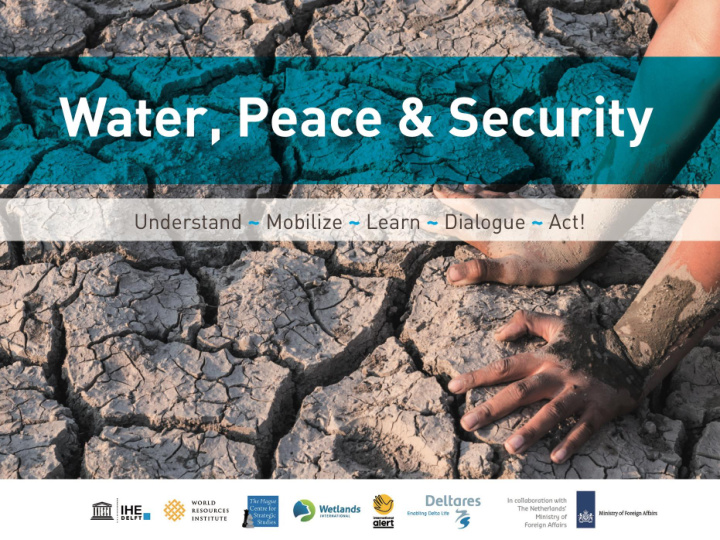



Challenges for the Center of Mali 1. Inner Niger Delta • Setting the stage 2. Water Resource Conflicts: • Inappropriate conflict management • Intensification of violence • The rise of inter-community violence 3. Development plans related to the Niger river Conflict-sensitivity and dialogue 4. Way forward: Opportunities and challenges 5. Conclusion and recommendations
The Inner Niger Delta Largest wetlands in west Africa, Hub of food production and biodiversity Provides 15% of the national cereal production • Provides 80% of the national fish production • Is home to 50% of the national herd
IND: Climate buffer and Epicenter of Conflicts, Why? • Shrinking of flooded area: → from 41 000 Km2 to less than 10 000 Km2 in 50 years…. • Speed population growth: → from half million to over 2 million depending on livelihoods from IND Drastic increase of water stress resulting in (armed) conflicts between fishermen, farmers, pastoralists 4
Water-Resource Conflicts Competition for access to and management of water resources • Conflict over Bourgoufields • Conflict between socio-economic groups • Ethnic polarization
Water-Resource Conflicts: Inappropriate Conflict Management Laws and Justice systems • Overlaps & contradiction: Traditional and modern laws • Disconnect between people and modern justice system • Traditional justice lacks power and its legitimacy is questioned • Some misbehavior within the defense and security forces
Water-Resource Conflicts: Intensification of violence Spread of conflict from the north to the center • Terrorist and Jihadist groups • Marginalized and young people are targets • Exploitation of feelings of inequality • Self-proclaimed self-defense militias
Water-Resource Conflicts: Inter-community violence
De Development t pla plans rela elated d to o the the Ni Niger r ri river Two projects aimed at food and energy security, but conflict driving, require inclusive Dialogue between stakeholders • Water infrastructures: Fomi dam • Large scale irrigation: Office du Niger
The way forward Opportunities created by setting up Unions and Coalitions • Improved communication between water user groups (farmers, fishermen and pastoralists): ➢ Peacebuilding pathway forward ➢ better future predictable; • Improved organizational capacity of communities for better governance: ➢ negotiation capacity increased ➢ Interests of each group considered 10
The way forward Challenges • How improving access to credits to scale up bourgouculture (water grass pilot actions) • How assuring transparent communication from national policy level to downstream actors • Handle insecurity linked to external actors imposing charia
Co Conclu nclusions and and Rec ecommendations How to create more security in this complex situation • Challenging wetlands ecosystems sustainable management • Policy and social inclusive dialog on natural resource management, especially water (gvt, communities, CSO/NGO…)
Thank you! www.wetlands.org/watershocks
Recommend
More recommend